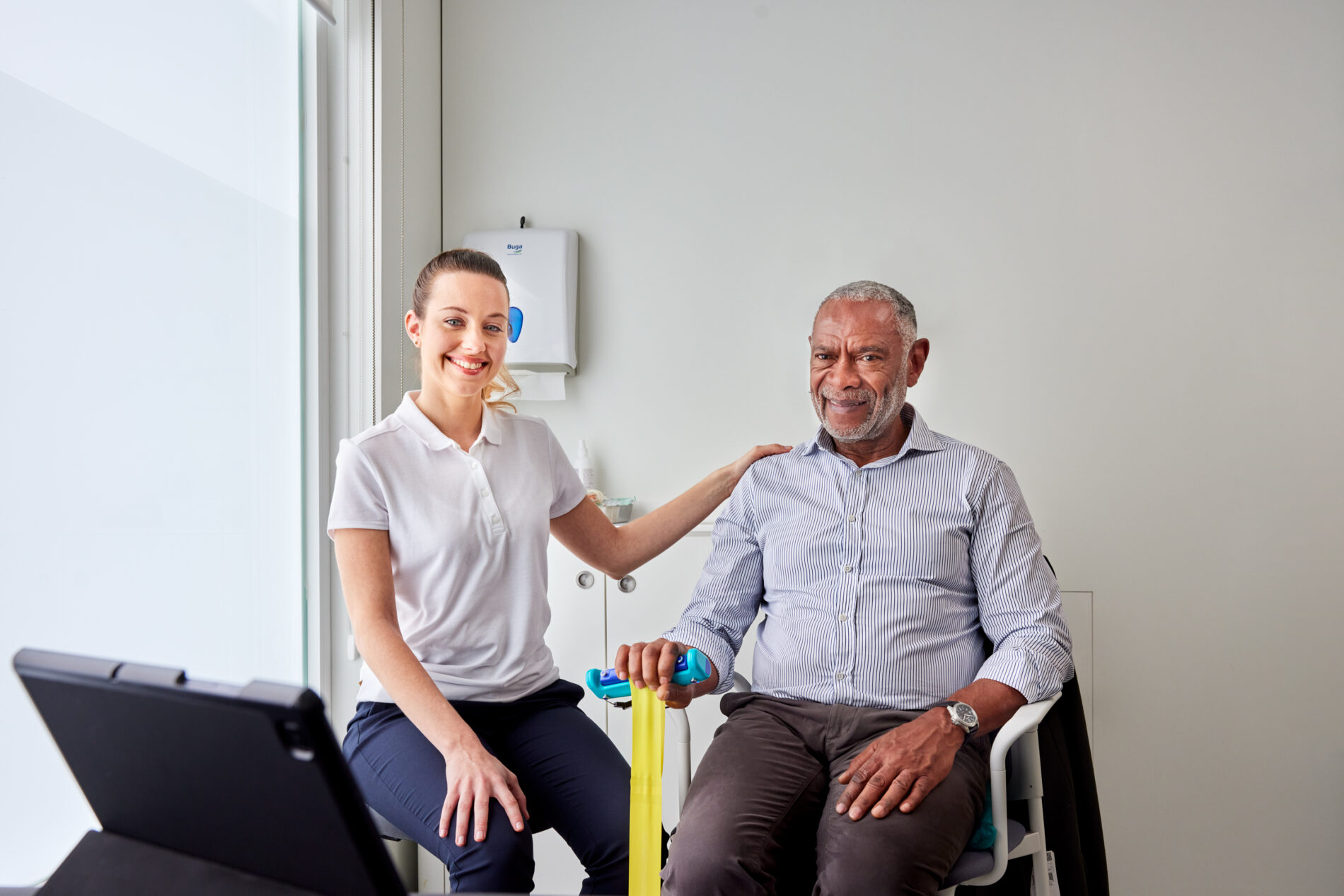A Clinician’s 6 Tips For Using GripAble
It is essential for individuals who are in need of rehabilitation after experiencing an upper extremity injury to prioritize visits to therapy and stay on track with their prescribed treatment plans. For clinicians, having motivated patients and tools to utilize during therapy allows for continual learning about effective treatment options, monitoring and tracking patient progress, and more.
Clinicians are finding that there are new ways to keep patients engaged in their rehabilitation journey by integrating GripAble into their therapy practice. GripAble is a rehabilitation platform for the hand and wrist that combines a gamified app with a handheld sensor. This modern and savvy way of tracking movements and progress makes GripAble a unique and beneficial tool for both patients and clinicians.
Below are six helpful tips from clinicians who are currently utilizing GripAble:
1. Think outside the box
GripAble can be used to achieve physical, cognitive, and psychosocial goals, so it’s important to try out different ways of using the device, such as combining it with Theraband to increase the resistance during wrist training. Some patients might experience more pain while practicing certain exercises than others, so a great way to distract them is to use the games as a motivator. GripAble is fun and engaging, which will assist you in guiding your patient through the activity levels to show them that the more they “win,” the more they are improving their grip strength without the focus being so much on potential aches and pains.
2. Take the patient’s position into account
GripAble can be used both while sitting or lying down. For those who are safe to do so or in supervised sessions, consider changing your patient’s position. Think about what postures are required for the daily functional tasks your patient needs to train for and have them play in these positions. Remember to always check in with your patient to make sure that when they are changing the way they are positioned, that it’s happening with approval, and the appropriate movements and reps assigned.
3. Trial the device before prescribing to your patient
As a therapist, it’s imperative to know how the device works and feels before introducing it to your patient. The more knowledge you have about GripAble as a clinician, the more helpful you can be for your patient who might be experiencing it for the first time. You will also have a better understanding of the activities and their application for your patients, as well as how to integrate it into your own therapy practice. We recommend all clinicians spend some time navigating the app to become comfortable with the reporting functionality, goal setting and achievements, and to be able to troubleshoot any clinical questions that may come up during a session.
4. Observe the patient’s performance, NOT just the screen
Although the screen can be engaging and fun to observe, it’s important to watch how your patient is using the device to be able to correct any unwanted compensatory movements. While a patient is using GripAble, we recommend standing directly behind them so you can observe their exercises and the screen simultaneously. This is even more helpful if you are prescribing it to someone for the first time. When a patient is new to the device, we suggest clinicians dedicate time to watching the patient use the device so you’re comfortable with them using it at home too.
5. Consider the patient’s cognitive level
For any clinician, you’ll want to share the activities that are best based on the motor learning strategy you plan to deploy. Be sure to ask yourself how much verbal instruction your patient requires. You can also increase or decrease the cognitive load for your patient by choosing different levels, adjusting the volume, or incorporating games with haptic feedback.
6. Prioritize the importance of training
Don’t be afraid to hold your patient accountable and to communicate that improvement may not come overnight. With rehabilitation, consistency is key! The more you encourage your patient to make training a part of their daily routine, the more progress they will make with repetitions and intensity. If your patient is struggling to stay on track, get creative with how they can provide you updates, or hold a more in-depth check-in during your clinical sessions. The daily reports will provide an objective record of how much your client has engaged in their program and this can guide any discussions around adherence or augmenting the training regime. Overall, this can improve function strength and improve activities of daily living.
Clinical appointments are an essential part to every patient’s road to recovery, and GripAble is a device that provides a new form of rehabilitation that is a smartphone (Android) compatible for those who want to build strength and confidence from anywhere. Check out a patient’s story and experience using GripAble by clicking the button below!

